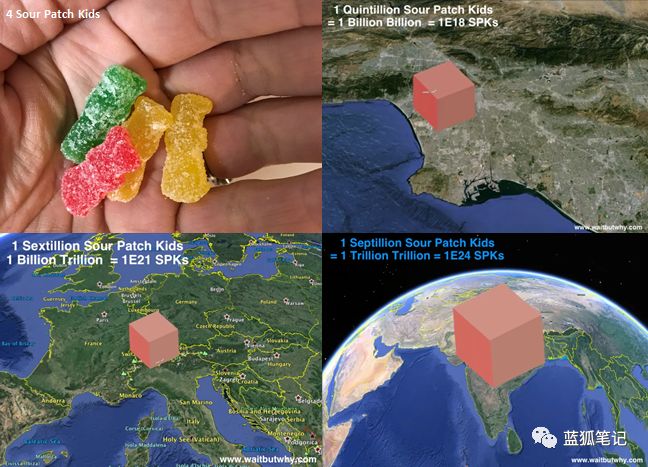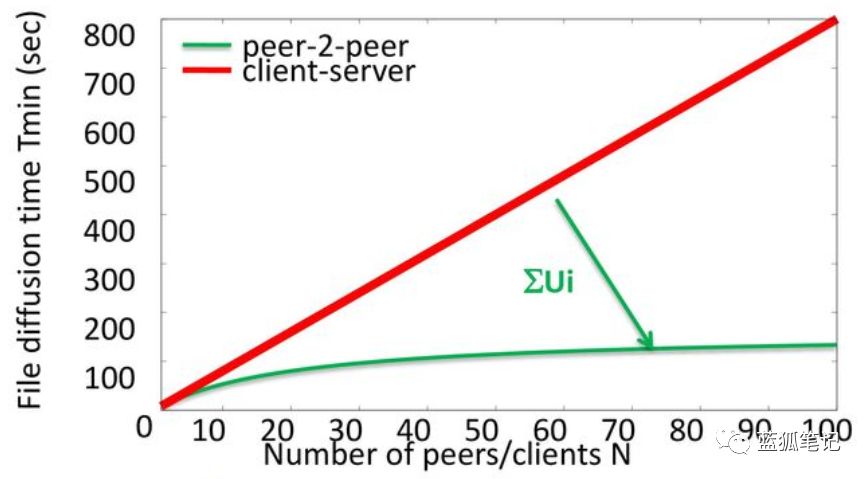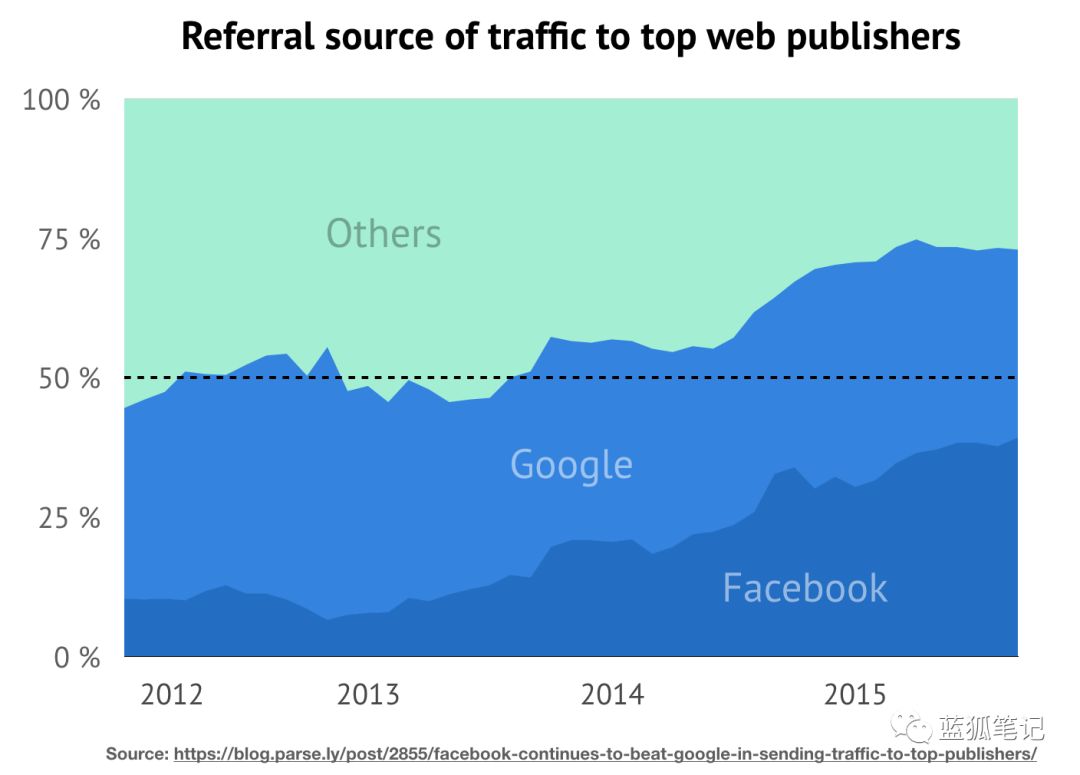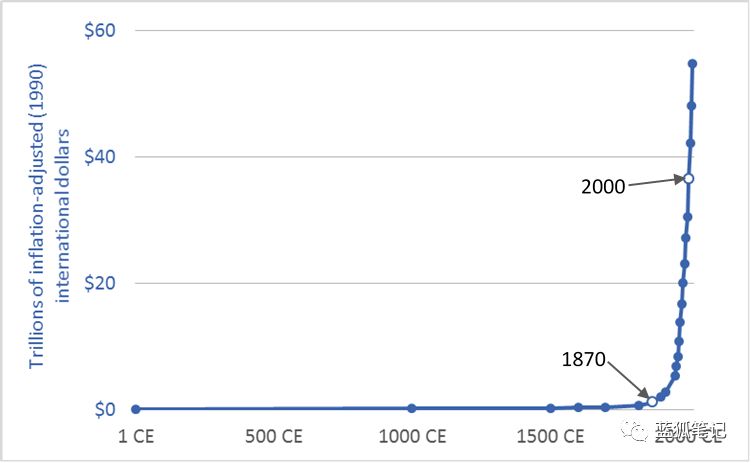Why is the blockchain far beyond people's imagination?
Foreword: In the future world of artificial intelligence, Internet of Things and blockchain driving, there may be a world that cannot be touched by human imagination today: a world far beyond the value of any period in history. As the complexity of machine growth is exponentially rising, the difficulty behind solving the problem is unimaginable today, and its hidden value is unimaginable today. From this perspective, in the long run, the combination of blockchain and Internet of Things, the combination of blockchain and artificial intelligence, there will be large ecological projects in these two areas. So who does it belong to? Let us pay close attention. The author of this article, Tory Green, is translated by the "Leo" of the "Blue Fox Notes" community.
Spending time researching the blockchain, you'll find yourself being overwhelmed by various benefits that are almost as relevant to every aspect of our lives. A large number of articles emphasize the ability of blockchain technology to replace the existing financial system, reshape the transmission of content, transfer tokens of physical assets, build sources of digital assets, etc…
In a nutshell, you might think that this phenomenon has the potential to create tens of billions of dollars (if not trillions) of economic value.
Then you are wrong.
- Winter is over, is spring still far behind? 10 pictures review how the cryptocurrency in the first half of 2019 came out of the trough
- The gathering of the public coffee, the Ethereum Technology and Application Conference was held in Jingsheng University
- Libra Research Report of CCID Research Institute of the Ministry of Industry and Information Technology: Advocating China's Active Promotion of Digital Legal Currency Construction
Although the application discussed today is very compelling, I think that by the end of the century, these values may be just the error values. (Blue Fox Note: This refers to the future economic value is very large, billions of dollars may even No fraction is coming.). Given the recent advances in artificial intelligence, the Internet of Things, and big data, the potential impact of the blockchain will not be measured in billions or trillions of dollars, but in trillions of dollars.
Can this new technology produce such a huge amount of value? You will definitely doubt, of course you should be suspicious. Because the blockchain is not designed for the human brain, it is born for the machine.
The dawn of the "smart machine" economy
In his book The Third Wave: Entrepreneur's Future Vision, former AOL CEO Steve Case believes that the impact of digital technology on our economy has been relatively modest to date. Although the Internet has revolutionized the way we shop, communicate and consume media, it is far from reaching its full potential.
In the next 10-20 years, we may see IoT, artificial intelligence, and the new industrial revolution driven by big data, which will penetrate all parts of our economy and society. Some possible cases include:
* Agriculture: "Smart Farm" will use remote sensors to monitor small changes in the climate and detect irregular conditions. The automated system will synchronize the use of water and fertilizer, and the robot will grow, grow and harvest crops.
* Logistics and Transportation: Automated vehicles will integrate "smart warehouses", use remote sensors to track inventory, and use telematics to optimize routes and coordinate delivery times.
* Healthcare: Artificial intelligence doctors will become commonplace, remotely monitoring patients' 24/7 data streams, collected from wearable devices, and immediately associated with global medical knowledge reserves, providing early warning and highly accurate diagnosis.
* Energy: The public sector will abandon control of the grid and replace it with remote sensors and machine learning to automate its power generation portfolio, coordinate distribution and remotely monitor and control energy consumption in “smart homes” and building networks.
Unlike the previous industrial revolution, the “smart machine economy” will be largely self-managed, consisting of hundreds of billions of connected devices (“machines”) that use artificial intelligence to automate our lives. Every aspect.
Low beer? no problem. Your smart fridge will sense this and send the drone to take six boxes.
Unlimited complexity
Although this is a hopeful vision, it is also a bit worrying.
The simple logic tells us that in our economic system, the more actors, the more complex the system. But many people forget that complexity grows exponentially.
Robert Metcalfe illustrates this with his law of the same name, which states that in a system, the number of potential relationships is proportional to the square of the number of users in the system. (Blue Fox notes: It is proportional to the square of the number, which produces exponential explosive growth.)
Simply put, 2 phones have 1 connection, 5 phones have 10 connections, and 12 can have 66 connections.
Our current world is made up of 7 billion people, which means there are 25 trillions of possible economic relationships, each of which represents the possibility of multiple transactions.
To be sure, this is a huge amount of data. But imagine what happens if hundreds of billions of other economic actors in the world join in immediately. A machine that can use some form of artificial intelligence to shape its own relationships and conduct autonomous transactions…
As you may have guessed, things have become very complicated. It is predicted that by 2030 there will be more than 100 billion connected devices using some form of machine learning, and if the predictions are correct, we will live in one with 5 1 x 1021 connections. If you believe in the prediction of Softbank's 1 trillion connected devices, then this number will increase to the level of 1 × 1024.
Because these numbers are huge, they are difficult to master. However, the key point here is that the number of business participants to be added is likely to make the global economic system more than 2,000,000% more complex than we currently experience.

(Visualize septillion (1×1024) with the help of Sour Patch kids)
So by 2030, we will likely live in a world of almost infinite complexity – with billions of trillions of connected devices, including connections of more than a trillions of dollars, performing countless transactions, all of which There are no potential human negligence.
are you afraid? This is a normal reaction. This is a worrying scenario that can cause a lot of problems. include:
1. Can existing CS (Blue Fox note: also refers to the client-server architecture) and cloud architecture handle this level of growth?
2. Is the centralized system, that is, our system today, able to maintain security? Or, will a single point of failure become a “honeypot” for hackers? (Blue Fox Note: Honeypot technology is a deliberately designed lure technique that entice an attacker to attack them by arranging some bait hosts, etc., and the defender can thus learn the attacker's routines and tools. In turn, enhance protection.)
3. Can we believe in autonomous behavior in this economy? More importantly, can they trust each other?
4. Do we believe that centralized entities (FAANG, etc.) manage this system and believe that they will exercise almost unlimited powers with caution?
I think many people will argue that the answer to these questions is "no" without hesitation.
Fortunately, there are elegant solutions to these problems, one of which comes from Nakamoto, which may be unconsciously.
Blockchain is the brain of the global brain
Quickly remind that the blockchain is a groundbreaking technology because it is the first technology to solve the problem of General Byzantine.
Until then, if you don't hire a central organization to build trust and enforce rules, there is no way for people to organize large-scale strangers from a long distance.
The release of Bitcoin in 2009 created a new paradigm that eliminated the need for intermediaries and created an opportunity to organize in the decentralized way for the first time in human history.

The importance of decentralized networks cannot be underestimated because they will be the basis for creating scalability, security and trust in the smart machine economy.
Advantage 1: scalability
As mentioned earlier, the emergence of the Internet of Things may increase our economic complexity by orders of magnitude, resulting in the need to carefully design, monitor, and manage large-scale transactions that are unimaginable.
The system we use today is difficult to handle this unprecedented traffic growth, because centralization itself creates a "bottleneck" in the network. Because the CS mode (the blue-fox note: that is, the client-server architecture) tends to scale linearly, in other words, a certain amount of traffic increase requires similar processing power growth on the server side. This leads to an almost impossible processing capacity to keep up with the expected traffic demand growth without large-scale investments in infrastructure (such as building large numbers of new servers in the desert).
On the other hand, a decentralized peer-to-peer network can achieve exponential expansion because each device can act as both a client and a server, simultaneously starting and completing requests from other devices. This allows them to handle large volumes of increased traffic without sacrificing efficiency or investing large amounts of capital.

(With the expansion of the CS model, the time to file diffusion has increased significantly, but for peer-to-peer networks, it has remained essentially unchanged.)
Given the current dilemma, it seems ironic to list "scalability" as a blockchain, but in fact, they can create a true peer-to-peer network that can solve problems such as trust, security, misplacement, etc. It is a problem that plagues the past system. This is a key feature that helps people create a powerful framework to extend the highly complex ecosystem of the future economy.
Advantage 2: Security
A centralized architecture leads to scalability issues, as well as a single point-of-failure that relies on the center, creating a huge security risk – also a “honeypot” role, which malicious actors (people or machines) ) The entire network can be disabled through a collaborative attack.
Decentralized networks, on the other hand, do not rely on a single central server to handle all processes. They mitigate this risk by leveraging millions of individual nodes. Although malicious actors can attack one, dozens or even hundreds of nodes, they are unlikely to shut down most of them.
Perhaps more importantly, the decentralized economy can be used as a hedge against something more horrible than hacking or malicious AI, which is to control the “global brain” through global elite groups.
Since traditional systems require centralization to achieve trust, this leads to a market rule that tends to “winners eat”, which is a hotbed of monopoly. In fact, in the past few decades, we have seen the rise of FAANGS, which account for more than 70% of Internet traffic, is expected to control 90% of the cloud, and effectively control prices, review content and shape culture.

(Source of traffic routed by top web publishers)
Under the current paradigm, exponential growth in traffic will only deepen this moat and create potential opportunities for Orville's future, threatening our economic, political, and cultural freedoms.
But once again, the correct use of blockchain technology has eliminated the need for these “gatekeepers”, “defangs” FAANGS (or where they succeed), democratizing the ecosystem and ultimately ensuring the security of the autonomous market.
Advantage 3: Trust
Finally, trust is critical to the creation of a smart machine economy. A fully automated ecosystem, if there is only limited human supervision, then this is a terrible proposition that will create many problems, including:
* How do we verify that nodes and Internet devices are real?
* Are devices on the "edge" more vulnerable to hacking?
* Can we verify that the data has not been manipulated?
* How do we protect against malicious AI?
* Do we believe that machine intelligence will act in the best interests of society?
* How do we ensure that the centralized entity does not choose AI for its own benefit?
Similarly, the two inherent properties of blockchain—through consensus and non-tamperable trust—can ensure data integrity, audit system thinking processes, help nodes verify each other, facilitate machine-to-machine interaction, and allow autonomous participants to contribute. Information and synchronization decisions.
1,000,000,000,000,000,000,000,000 Machine
So what is the content here? How big is the blockchain-driven economy?
Unfortunately, I don't think I can answer this question, just as a caveman cannot predict the effects of the industrial revolution.
But there are a few things to consider:
1. Historical technological advances have ignited exponential growth in global GDP, each larger than the previous one. Notable examples are:
* Development of machine tools and steam power in the 18th and 19th centuries (about 300% increase)
* Inventions of telephones, light bulbs, phonographs and internal combustion engines at the turn of the 20th century (approximately 800% increase)
* Introducing personal computers, the Internet and information technology in the second half of the 20th century (approximately 1,400% increase)
2. From the beginning of 0 AD, it took almost 1500 years for GDP to double. And now it doubles every 20 years.
3. Applying Metcalfe's Law, although it may be rough and inaccurate, there will be 100 billion new economic actors involved in the world's nearly 18 trillion global DGP (an increase of 20,000% today)
So, is it ridiculous to assume that improvements in artificial intelligence, the Internet of Things, and blockchain may develop into situations that we cannot currently anticipate?
Maybe, but I may also be laughed at because I showed this icon in the late 19th century:

(World GDP output in the past 2000 years after adjusting inflation – every "industrial revolution" has triggered exponential growth)
Although I am not smart enough to even begin to guess the exact value of the token economy, I humbly admit that it may be much larger than we think.
After all, the “smart machine” economy has the potential to subvert the history of mankind for thousands of years and drive value evolution in ways we cannot imagine.
——
Risk Warning: All articles in Blue Fox Notes do not constitute investment recommendations . Investment is risky . Investment should consider individual risk tolerance . It is recommended to conduct in-depth inspections of the project and carefully make your own investment decisions.
We will continue to update Blocking; if you have any questions or suggestions, please contact us!
Was this article helpful?
93 out of 132 found this helpful
Related articles
- How should the banking industry use blockchain technology?
- Counterfeit currency attacks on the currency circle: how to prevent it effectively?
- Babbitt column | Dovey Wan: Bitcoin is not a safe haven, yet
- Weekends are rising? Since May, 40% of BTC's rising prices have occurred on weekends.
- Where is the development bottleneck of DeFi? What is the opportunity?
- Reddit will accept cryptocurrency rewards, this time without robots
- Coinbase: Bitcoin is becoming mainstream in the US, and nearly half of institutional investors are considering holding cryptocurrencies






